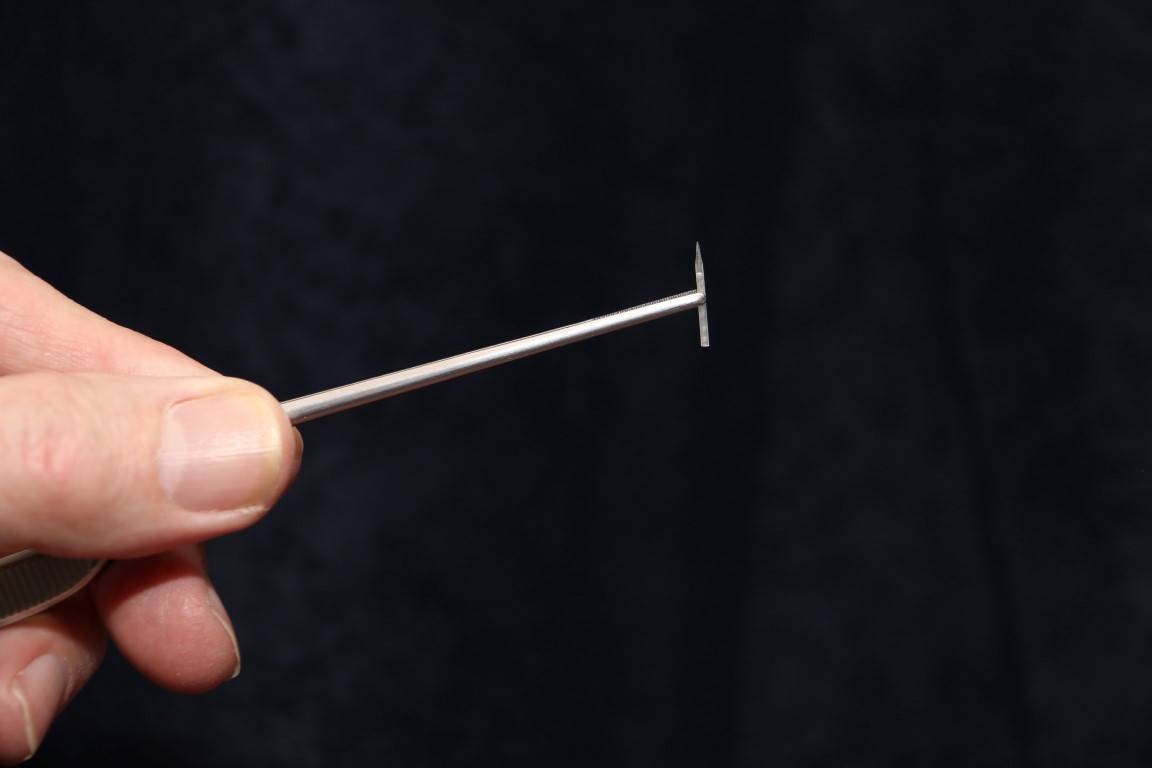‘Worldwide 18,000 people die every day from contagious diseases. You can prevent so many victims through vaccination.’ In one sentence Gijsbertus van de Wijdeven summarises what the vaccination system he developed could mean. The man from Landgraaf developed the Bioneedle, a system that entails “shooting” small hollow needles (1.5 centimetres) filled with the correct dosage of inoculant into the skin using a high-pressure pistol. The needle quickly dissolves subcutaneously and the vaccine is released into the body. The Bioneedle is a smart, cheap and reliable alternative to the traditional method of vaccination. As is generally known, this is done with a needle, with which a liquid has to be extracted from a vial and then injected into the skin.
Clean and effective
This traditional vaccination method has disadvantages, especially in certain developing countries where climate, hygiene and logistics play a negative role. The vaccine must be refrigerated (and stay refrigerated) at 4 to 6 degrees; needles can cause infection; vials and needles create waste; and trained personnel are required to do the injections. Moreover, it is a time-consuming procedure.
The Bioneedle system eliminates these disadvantages. The system will function on the basis of cartridges which contain 50 bioneedles each, which are inserted into a vaccination pistol from there, followed by giving the shot. You can thereby give humans and animals the correct vaccination in a short time in a simple way. In principle, every bioneedle can be filled with a specific vaccine, and due to the simple method of administration, this can also be done by people who are not specifically trained for it. In contrast to the traditional vaccination from a vial with liquid, the vaccine in the Bioneedle consists of dry matter, so cooling is not necessary.
Soluble needle
The soluble needle is an important part of the system. Van de Wijdeven does not want to divulge what this needle is made of, but he does give us a clue. ‘The material is based on huge molecules present in the body and has a structure similar to glycogen (editor’s note: a glucose polymer).’ According to him it took a long time to find the suitable material and required a great deal of know-how. ‘Take a look at polylactic acid: when was that developed? Decades ago. They are still working on it.’ Van de Wijdeven also developed the technical injection system himself, and to date he has been working on its development for more than 15 years. Originally he was a veterinarian, and he worked on the side for many years on his own time with his own money. His innovation has been gaining more attention in the past few years, and, based on his experience with animals, the World Health Organisation encouraged him to make the system available for human vaccinations.
International attention
Meanwhile Van de Wijdeven’s idea has turned into a small company, the Bioneedle Technologies Group. The company received the Katerva Award in 2012, an international prize for sustainable innovation, considered by some as the Nobel prize for sustainability. The Dutch national government also sees potential in the Bioneedle. In November 2014, Van de Wijdeven, along with three others, was nominated as a Dutch National Icon. In addition to publicity, this has also resulted in concrete support; Minister Ploumen (Dutch Ministry of Foreign Affairs, Foreign Trade and Development Cooperation) and Minister Schippers (Dutch Ministry of Health, Welfare and Sport) will act as ambassadors for Bioneedle in the next few years. ‘Because of this and thanks to positive publicity, this has resulted in important contacts,’ says Van de Wijdeven.
Market introduction
The system he developed is innovative, has worldwide attention and the advantages are evident. The question remains of when it will be available on the market. Apparently it takes some more time. Van de Wijdeven: ‘We must take one more step: testing the bioneedle on humans. And that is indeed an expensive step.’ This implies that Bioneedle must start testing and must take all kinds of rules, regulations and protocols into account in the process. The question of when the vaccination system will actually be put to use for humans is therefore still open.



